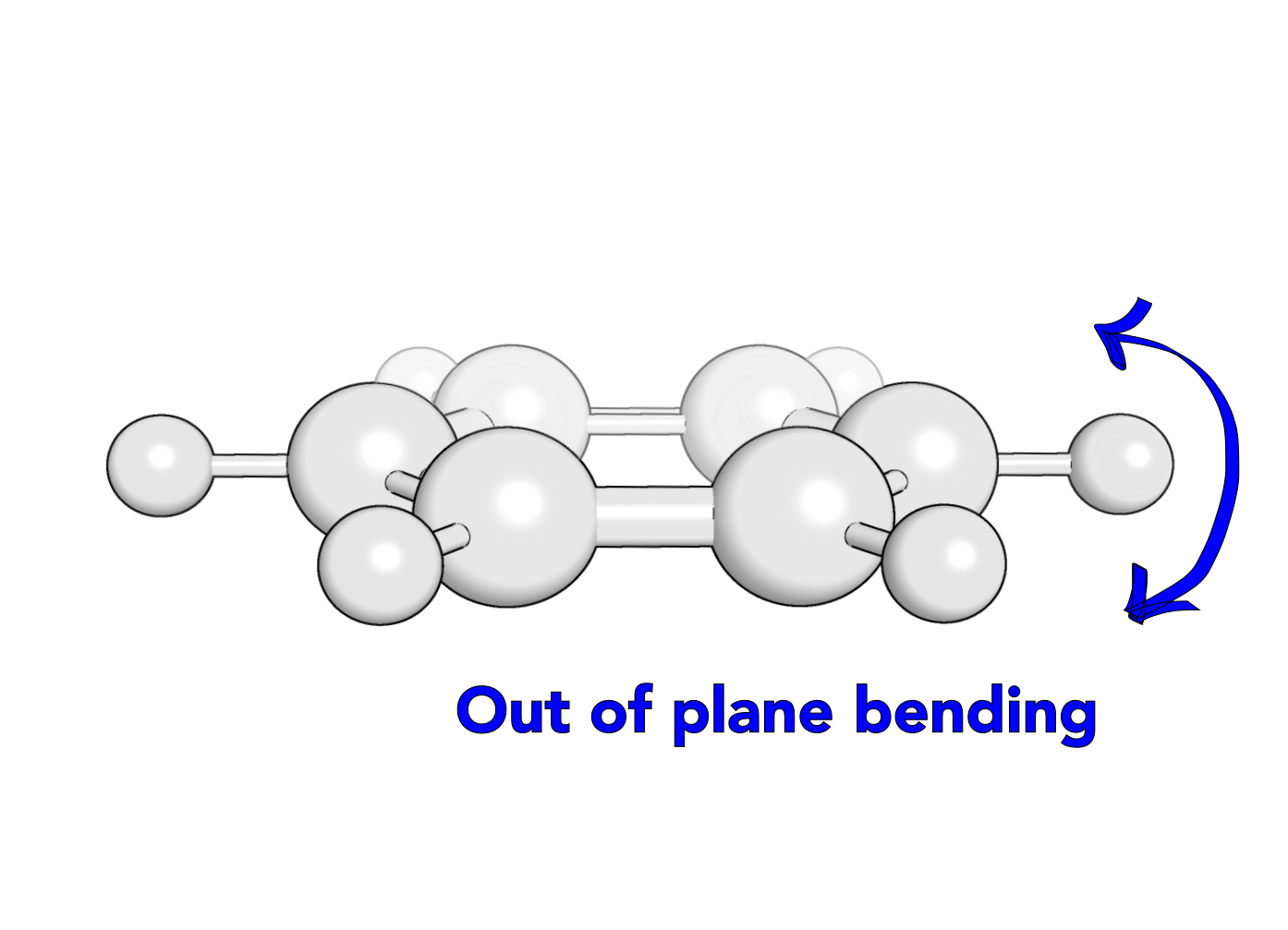Ring Planarity¶
Purpose¶
This benchmark evaluates the ability of machine-learned interatomic potentials (MLIP) to preserve the planarity of aromatic and conjugated rings in small organic molecules during molecular dynamics simulations. It tests whether the MLIP respects the aromaticity throughout the simulations. Accurate modeling of ring planarity is essential for capturing the structural and electronic properties of many pharmaceutically and chemically relevant compounds.
Description¶
For each molecule in the dataset, the benchmark performs an MD simulation using the MLIP model in the NVT ensemble at 300 K for 1,000,000 steps (1ns), leveraging the jax-md, as integrated via the mlip library, starting from a reference geometry. Throughout the trajectory, the positions of the ring atoms are tracked, and their deviation from a perfect plane is quantified using the root mean square deviation (RMSD) from planarity. The ideal plane of the ring is computed using a principal component analysis of the ring’s atoms.The average deviation over the trajectory provides a direct measure of the MLIP’s ability to maintain ring planarity under thermal fluctuations, enabling quantitative comparison to reference data or other models.

Benzene OOP bending¶
Dataset¶
Starting structures for the simulations were extracted from the QM9 [1] dataset using SMARTS queries for a small selection of aromatic ring systems and then selecting the system with the fewest heavy atoms. The selected aromatic systems are: benzene, furan, imidazole, purine, pyridine and pyrrole.
Interpretation¶
Ring planarity should be maintained throughout a simulation if the MLIP respects the aromaticity of the systems. For larger systems, like indole, a slight deviation from the ideal plane is expected, as well as fluctuations due to thermal motion throughout the simulation. However, the average RMSD throughout the simulation should be small and not exceed 0.3 Å.